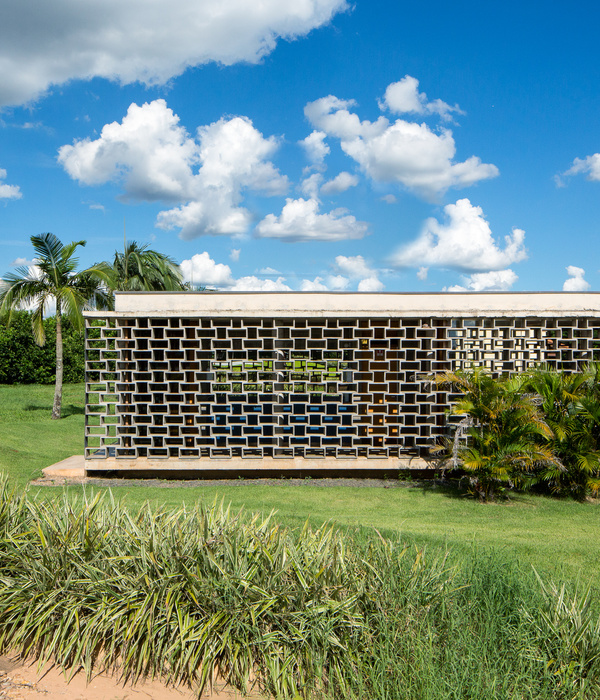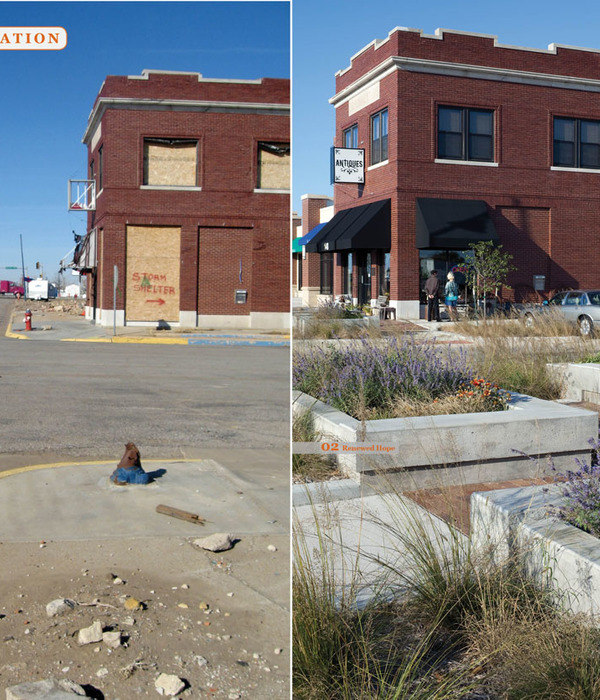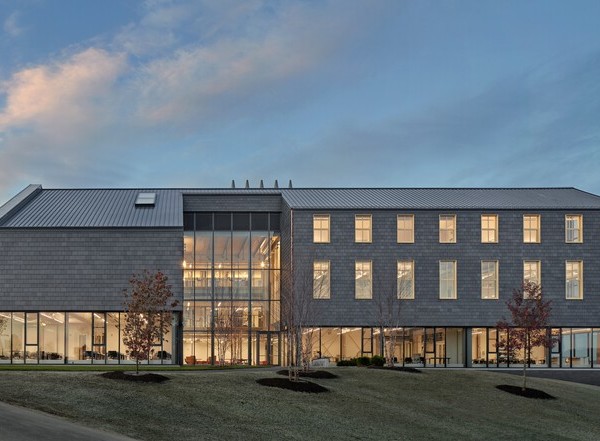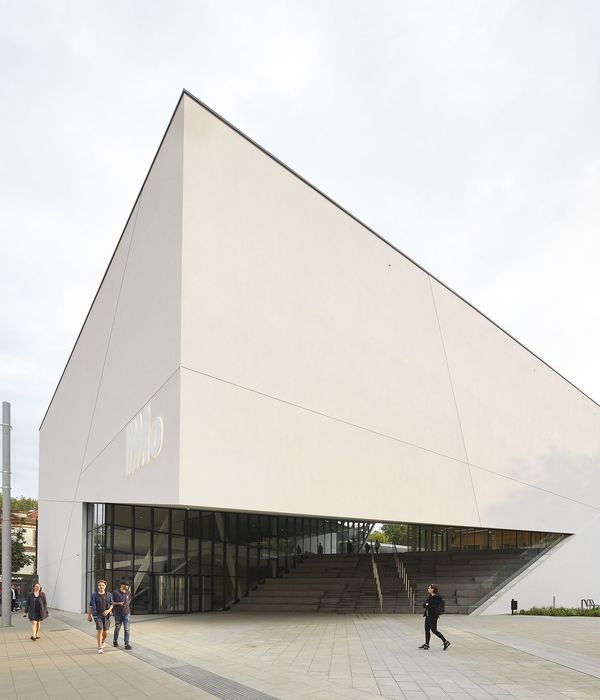The crematorium in Ringsted, Denmark is designed with respect and consideration for the cremation process. In most crematoria, the chapel area is the main focus, while the cremation itself is confined to a back-of-house, functional area. Instead, at this communal crematorium, family and loved ones may follow the coffin all the way through the cremation process.
The coffin is first carried from the hearse to a quiet and peaceful room for last goodbyes. From this quiet room, friends and relatives of the deceased have the option to follow the coffin and observe the cremation through a window into the furnace room. The 12-meter-tall furnace room is flooded with daylight; brick walls and granite floors are lit throughout the day by windows placed high on the East and West gables, which face the woods.
The crematorium is designed with consideration for the people who work there. The new furnace room creates good indoor climate and working conditions while also offering a worthy atmosphere for the relatives of the deceased. Users of the space are able to enjoy the light as it changes throughout the day and the year. The warm light reflects on the walls and flows in along an undulating ceiling.
From the outside the building volume is long and low, with the tall furnace room in the middle of the complex. The furnace room is inscribed into the base, bringing building to an approachable and human scale. Situated on a 50.000 square meter site, the crematorium is adjacent to the park-like grounds of an historic Danish estate, Kærup Gods.
The Ringsted Crematorium is built to meet new standards for flue gas purification and replaces eight former crematoria in the region. The design places an emphasis on flexibility, both with regards to function and to non-religious spaces, in order to sensitively accommodate all types of memorial gatherings. In the future, the surrounding site will function as a cemetery, and relatives will be able to pick up the urn from the crematorium and bury it at the cemetery.
{{item.text_origin}}












